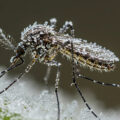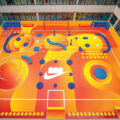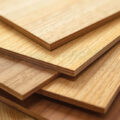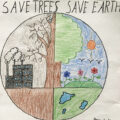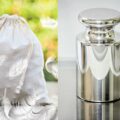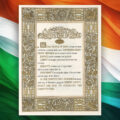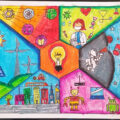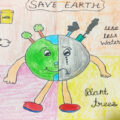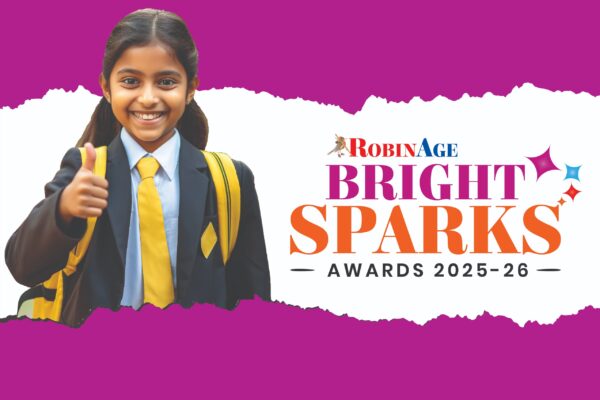
November 01, 2021
Artist, Hemal Bhavsar
Class 7, Sakar English School, Ahmedabad

Two years ago, my grandfather noticed the perfection of the lines I was drawing in my graph book. He was impressed with what he saw and advised and encouraged me to take on portrait sketching as a hobby. I started my first sketch of Mahatma Gandhi with a little hesitation. Though I finished the sketch with a lot of persuasion from my grandfather, it wasn’t the best.
During the lockdown, I had a lot of free time and I started practising portrait sketching a lot more seriously and over time, I got better. Today, I have made more than 100 sketches of corporate celebrities and film stars and I am getting orders from all over India and overseas too. On PM Narendra Modi’s birthday, I made a sketch of him and I plan to gift it to him whenever I meet him. I have been inspired by our PM’s advice to the young generation to be ‘Aatma Nirbhar’.
I feel very lucky to be born in an artist’s family where the last four generations have been active in the field of art. The talent has been passed on from my great grandfather who would make hand-painted cinema hoardings during his time. My grandfather and uncle are both very good artists. My parents are deaf and dumb, and I want to make them feel proud of me and my talent.

The Culinary Specialist, Tanishq Morcha,
Age 12, Serene Institution of Autistic Care, Bengaluru

Veena Viswanathan, Tanishq’s mother says, “10 years ago, Tanishq was diagnosed with Autism Spectrum Disorder. As a child, he used to spend most of his time in the kitchen. He also spent a lot of time watching food channels on YouTube. By the time he was five, he was comfortably participating in cooking. Gradually, he started making dosas, rotis, cupcakes, sambar and vegetables. With his limited vocabulary, he would express his desire to replicate cooking videos from YouTube and in the process, he started preparing a variety of dishes. During the pandemic, I started to share his culinary skills through the handle @Wonderfud on Instagram. He has prepared over a hundred varieties of Indian and global food. We hope that Tanishq’s cooking skills might inspire many other similar children to try their hand in the kitchen.”
Here’s one of Tanishq’s favourite recipes:
Healthy baked beetroot falafel using Chef Guntas Sethi Bhasin’s recipe.
INGREDIENTS
- 1 cups chickpeas, soaked overnight and boiled
- ¾ cup boiled beetroot
- ½ onion
- 3 garlic cloves
- 1 tablespoon coriander, chopped
- 1 teaspoon paprika
- Salt to taste
METHOD
- To a blender, add the chickpeas, beetroot, onion, garlic, coriander leaves and paprika. Blitz.
- Make equal-sized balls of the mixture and flatten them slightly. Top with sesame seeds.
- Line them in a baking tray and bake for 25 minutes at 180˚C.
- Enjoy with hummus.
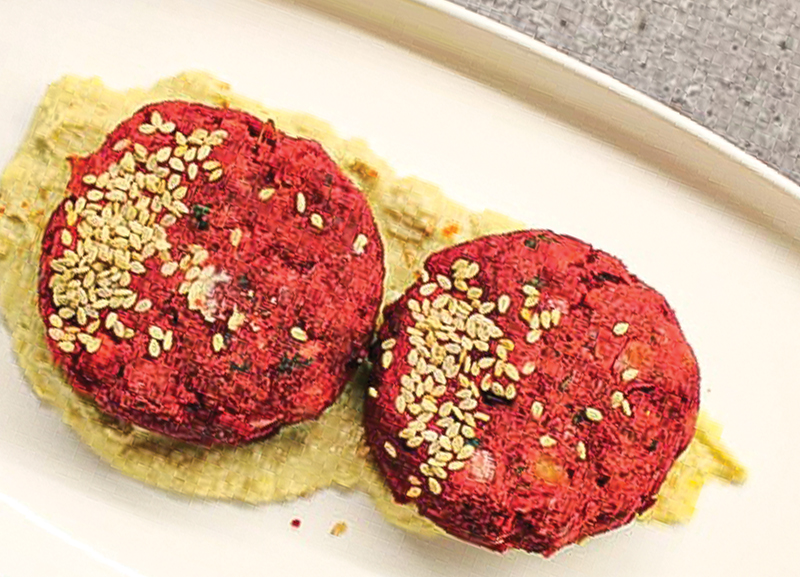
The Analyst, Shanay Dedhia
Class 2, Billabong High International School, Mumbai

I was a little younger than three years old when I first played with a Rubik’s cube. Seeing my interest, my parents started to give me more cubes and then started teaching me how to solve them. In no time, I had learnt to solve three different types of cubes. At 3.6 years, I had become the youngest cuber to solve three different types of cubes. Rubik’s cube is one of the best brain puzzles and it has a lot of benefits. I can now solve cubes in less than 60 seconds.
The Mathematician, Jinansh Dedhia
Class 5, Billabong High International School, Mumbai

I started my mental calculation training at the age of four years. I was just 4.6 years old when I received my first international gold medal at a global event called the World Education Games. I was very excited as everyone was congratulating me and clapping out loud. That set the precedent. Since then, I look up to mental athletes who perform better than me and try to reach their level to break their scores.
I have one world record of solving 97 calendar dates in a minute and five gold medals and cups in calendar dates. Apart from that, I also hold a world record for multiplication of five digits by five digits; two silver and bronze medals each in the multiplication of eight digits by eight digits; and a medal in Flash Anzan where a number from one to five digits flashes on the screen and one has to keep adding the numbers being flashed. I have won two gold medals at the World Education Games held by Australia and I have won a total of 11 international medals for India. I hope to be as good as a human calculator.
The Engineer, Ningombam Prem
Age 21 years, Manipur, Imphal

Ningombam Prem has built ‘Iron Man’ suits from scrap material and basic tools. Prem comes from a very humble family; his mother runs a small tea outlet. He completed his graduation in fine arts from Imphal Art College and also has his own YouTube channel named ‘Kanglei Tech’ on which he shares his creative projects. Prem has created seven versions of the Iron Man suits, a battery-powered Iron Man helmet and arms, an automated pollution-control mask, a mini refrigerator and a replica of the Real Steel robot. He started making electronic items when he was in class 3 and his first invention was a motorised mini fan. Prem’s work was retweeted by Anand Mahindra, chairman of the Mahindra Group, who was awestruck by Prem’s extraordinary talent for designing robots out of electric waste and cardboard. Prem hopes to eventually become a mechanical inventor.
The Environmentalist, Tejas Kannan
Class 10, The International School, Bengaluru
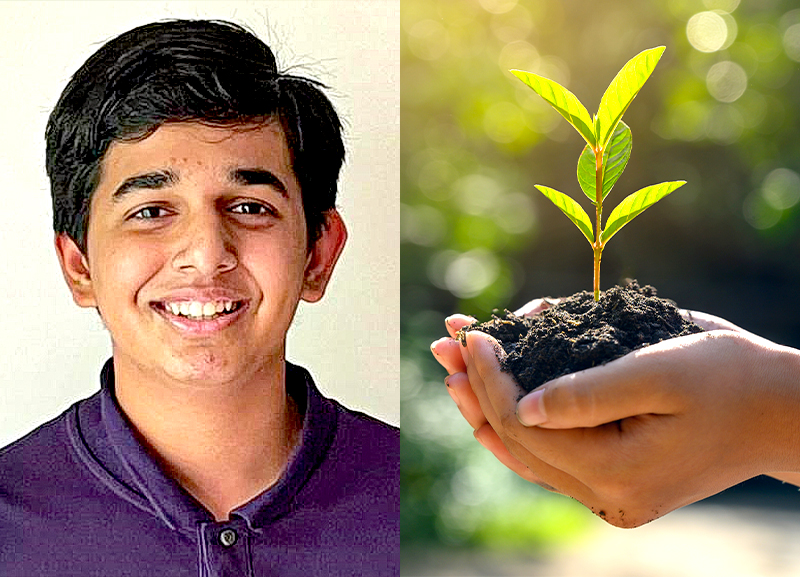
Ever since I was a child, I remember my parents being strictly against the use of plastics, whether in the form of plastic water bottles or snack boxes, as they have chemicals like Bisphenol-A (BPA), phthalates and dioxins, which are harmful to our body. Moreover, plastics are non-biodegradable and bad for the environment, so one has to try to avoid them in general. A common sight today is that most people carelessly use plastics to heat food and store water as they are not aware of plastic’s harmful effects on the human body and the environment. My grandfather, who is a paramedic, always insists that everyone should read the label of a product before buying it and understand its composition.
As I am passionate about protecting the environment, I have created a website, a podcast and a YouTube channel to educate society about the harmful effects of chemicals on the human body and the environment. The website has many activities and worksheets that are not just informative and educative, but fun too. During my summer holidays, I wanted to take the ‘Creating Social Awareness’ initiative further and reach out to the younger generation like me to help them understand that they are the future, and that they can take small steps to make the Earth and environment a better place to live in. I thus curated a worksheet that will help students and adults realise the importance of the phrase ‘Reduce, Reuse and Recycle’ and learn to make chemical-free cleaning solutions known as bio enzymes at home using basic ingredients.
Here is a simple recipe to make your own bio enzyme:
You can use any cup to measure as per your convenience.
INGREDIENTS
- 1 part jaggery, grated
- 3 parts lemon, pineapple or orange peels
- 10 parts water
- 1 teaspoon dry yeast
METHOD
- Fill a plastic container with the peels. The plastic container will allow the gases that form during the chemical reaction to expand.
- Add the dry yeast or bio enzyme from a previous batch.
- In a different container, add the water and start adding the jaggery. Stir till it dissolves.
- Add this jaggery mixture to the fruit peels and cover the container. Keep the cap a little open so the gases produced during the chemical reaction can escape.
- Stir the mixture 2 or 3 times a week. The bio enzyme will be ready in 60 days.
- The next batch can be sped up by combining a portion of the old with the new.
USES
- Watering plants and insect repellent: Add 6ml of bio enzyme to 1 litre of water and use it to water plants. It acts as a nutrient for plants and helps in healthy growth. It also protects the plants from pests and insects.
- Cleaning floors: Add 50ml of bio enzyme per bucket of water and use this water to clean floors and surfaces.
- Cleaning utensils and washing clothes: Add the bio enzyme to naturally available soap-nut liquid and water to clean utensils and add to clothes that are being washed.
- Washing vegetables and fruits: Add 1 tablespoon of bio enzyme to 500ml of water and use it to wash vegetable and fruits.
- Air freshener: Add 1 part of bio enzyme to 3 parts of water and mix well. Spray the liquid mixture across any area to remove bad odour and deodorise the space.

REFLECTION: Young Achievers
List any 3 children in the news who you think should win an award and mention why.





